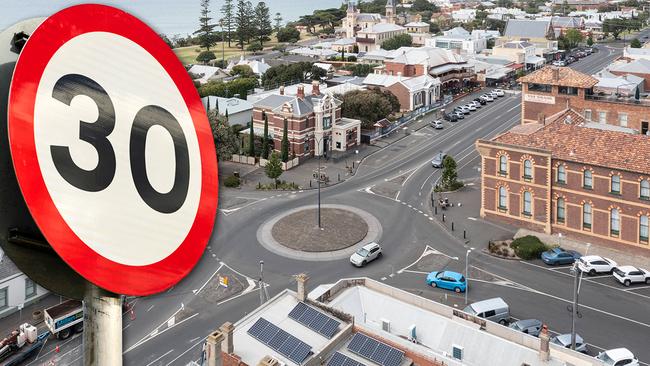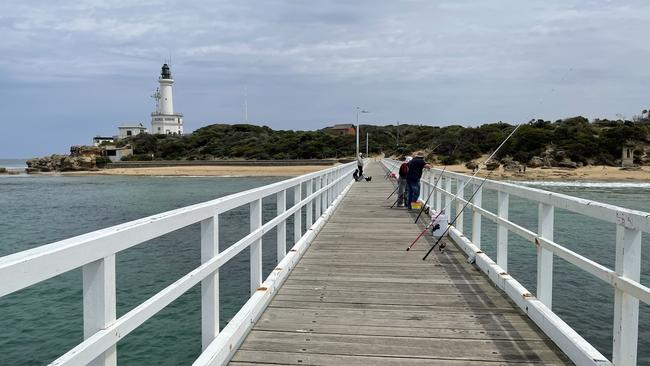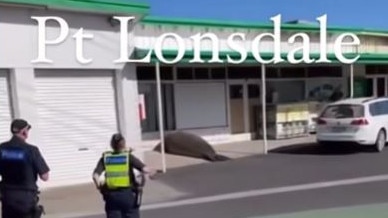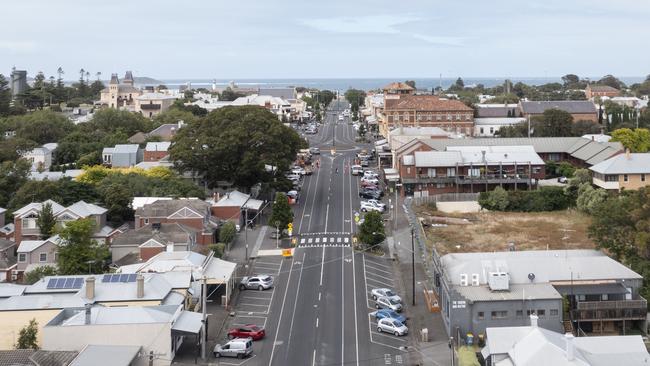Plan to ‘make the Borough of Queenscliffe the first 30km/h municipality in Australia’
A coastal municipality could be made a 30km/h speed zone, in a plan outraging residents but which council says will encourage the nervous, including women, to use roads.

News
Don't miss out on the headlines from News. Followed categories will be added to My News.
Residents and businesses in Victoria’s smallest municipality are up in arms as they face the prospect of sweeping 30km/h speed limits, as part of a radical council plan to encourage “walking, riding and wheeling” rather than driving.
The Borough of Queenscliffe, at the tip of the Bellarine Peninsula, is seeking feedback on its draft active transport strategy, that would slash speed limits in the twin towns of Point Lonsdale and Queenscliff, to reduce the use of vehicles and make streets safer.
“Make the Borough of Queenscliffe the first 30km/h municipality in Australia,” the Draft Active Transport Strategy 2023–2031,” states in bold.
“Making the Borough of Queenscliffe a 30km/h wide municipality will ensure safe streets
for all people.”
A council spokesperson on Friday told the Herald Sun: “A reduction in speed is an attempt in encouraging more use of the roads by those who are traditionally nervous about using roads particularly groups such as women, children and people with disabilities. Research shows that reducing speed limits encourages people from these groups to utilise active transport on roads.”
The draft plan suggests the changes should first be implemented on side streets in the holiday hotspot of Point Lonsdale because of a lack of footpaths, before being rolled out more widely.
The plan has been met with astonishment by the local community, with the head of Queenscliff-based Searoad Ferries, Matt McDonald, telling the Herald Sun his business - the largest transport operator in the area, moving more than a million people a year across Port Phillip Bay by boat - had not been consulted.


Mr McDonald said tourism was the number one economic driver in both Point Lonsdale and Queenscliff, with numbers surging over summer.
Public transport was also exceptionally poor in the municipality, which had an ageing population, he said.
A community petition against the move has gained hundreds of signatures in a short period.
Point Lonsdale resident and mother of two, Raelene McDonald, said 30km/h speed limits were simply not needed and the strategy appeared to be based primarily on the council’s Climate Emergency Response Plan.
“It lacks any real evidence for this change,” she said.
In a letter to the council opposing the move, longtime resident and Queenscliff CFA stalwart Bruce Golightly said the proposed speed restrictions “could have devastating consequences”, with volunteer firefighters first only able to travel to the station at 30km/h and then fire trucks only able to travel 20km/h faster than the posted speed limit, under lights and sirens, to the scene.
“These sound like only small delays in response times but the effect of only three or four minutes to a developing fire or a person trapped in fire or requiring CPR could have devastating consequences,” he said.
Residents that signed the community petition labelled the proposed speed limit reduction “madness”, “like an April Fool’s gag”, “insane”, “heavy handed, over the top and ridiculous”, with some saying it was a “look at me” attempt by the council to draw positive attention to itself for its environmental initiatives.

Local newsletter The Rip reported Borough of Queenscliffe councillor Michael Grout as saying reducing the use of fossil fuels in the municipality was important.
“We want to, as far as possible, minimise the use of fossil fuels in getting around the borough, which for most of us, is quite possible to walk or cycle around,” he said.
The draft active transport strategy, endorsed by council in late-February, spruiks reduced speed limits as a safety measure that will reduce the chance of accidents.
“The connection between the speeds of vehicles and chances of injury or worse a fatality are well researched and accepted,” it notes.
However, it’s understood accidents are very rare in the quiet, coastal municipality that has just 2,853 permanent residents and features a high 55.9 per cent proportion of holiday homes, resulting in the population over summer ballooning to about 17,000 people.
The permanent population has the oldest median age of any council area in Australia, with more than half the population aged over 60.
Minutes of the February 22 Queenscliffe council meeting state “the vision seeks a connected Borough, where walking, riding and wheeling are safe and enjoyable ways of moving to, from and around the Borough regardless of age, ability or gender”.
Borough of Queenscliffe mayor, Cr Isabelle Tolhurst said the council embraced a diversity of opinions and perspectives and encouraged people to make formal submissions on the draft strategy, which would inform what happened next.
“Feedback ensures the strategy reflects the wants and ambitions of our community. That has always been the case,” she said.




